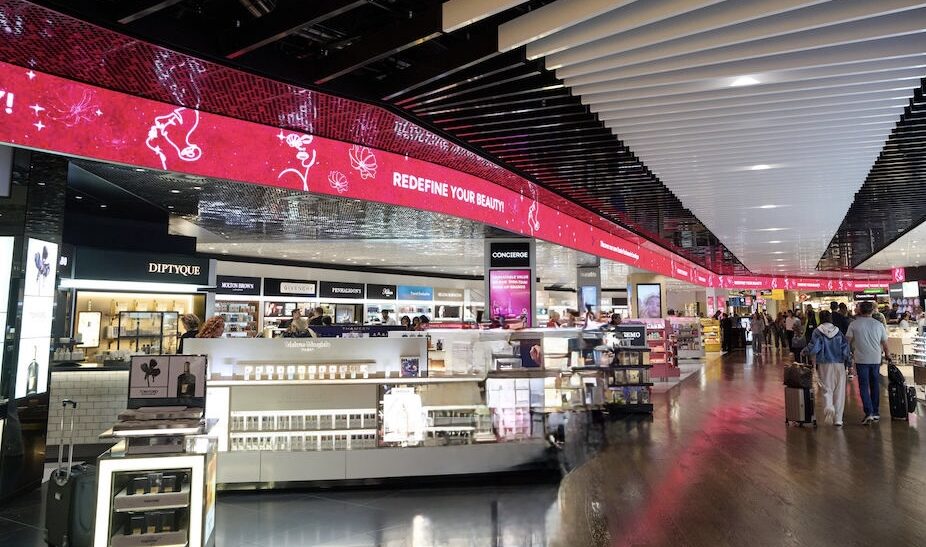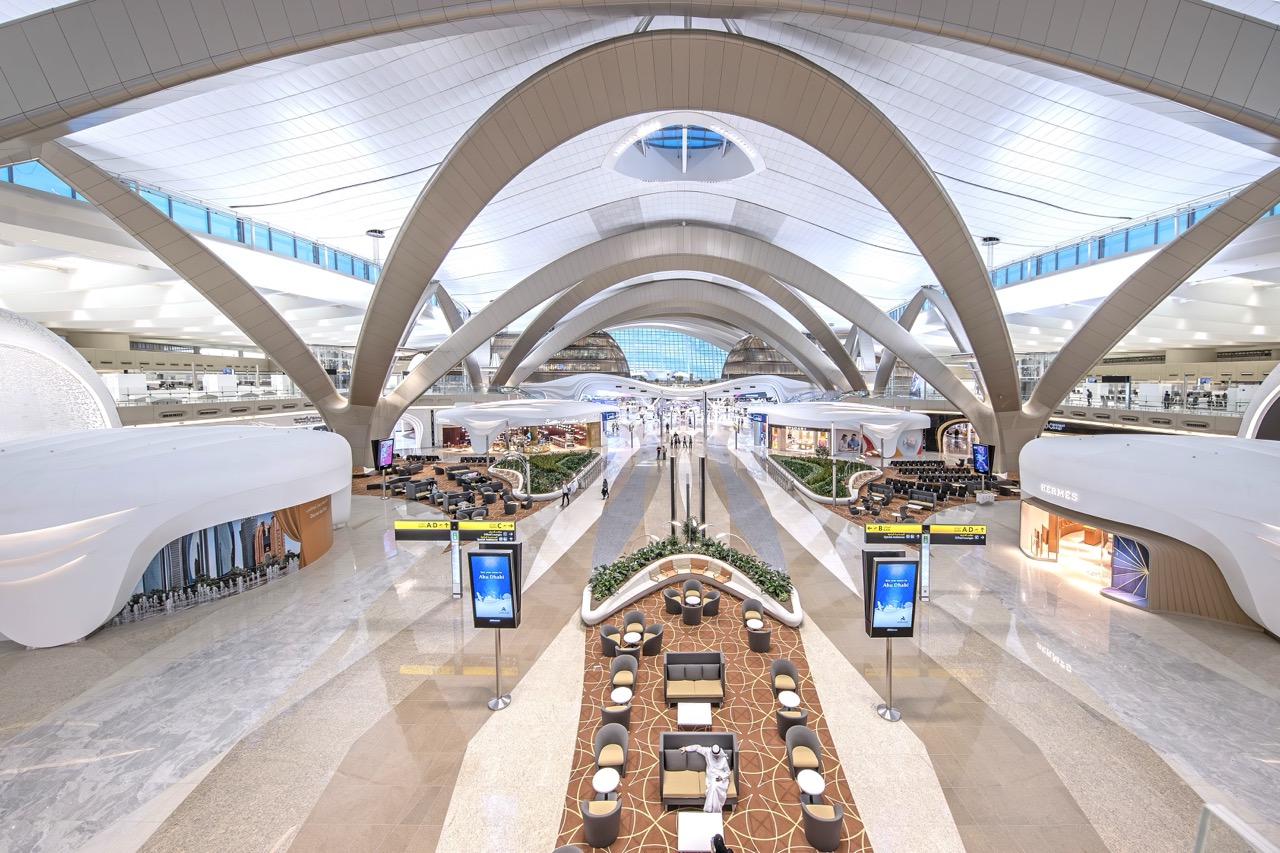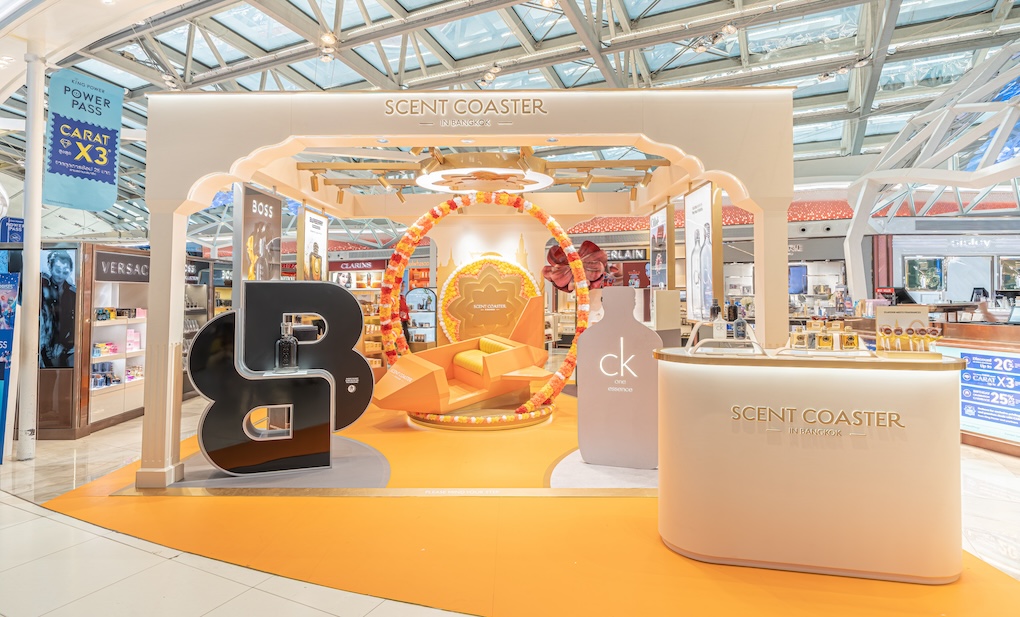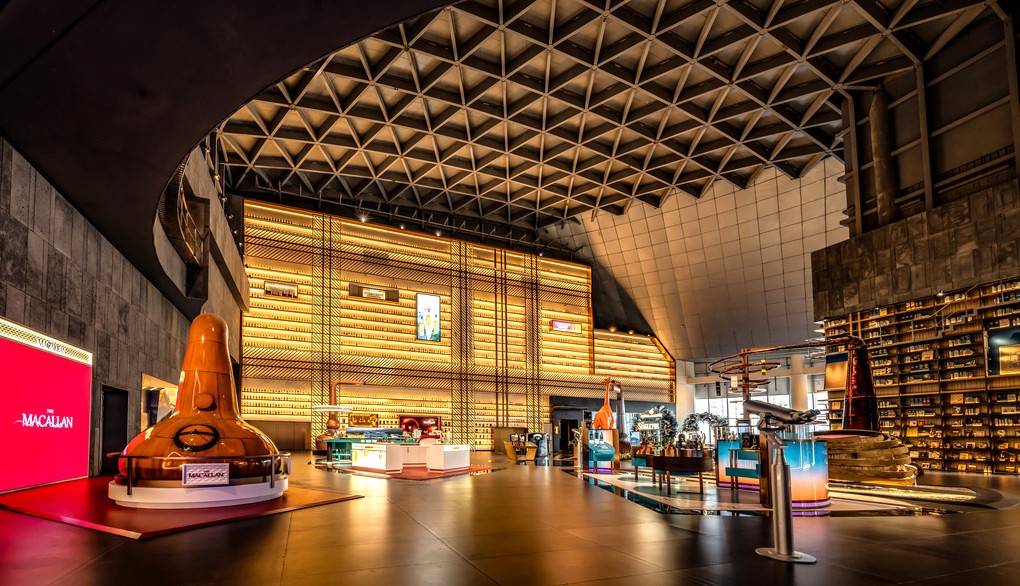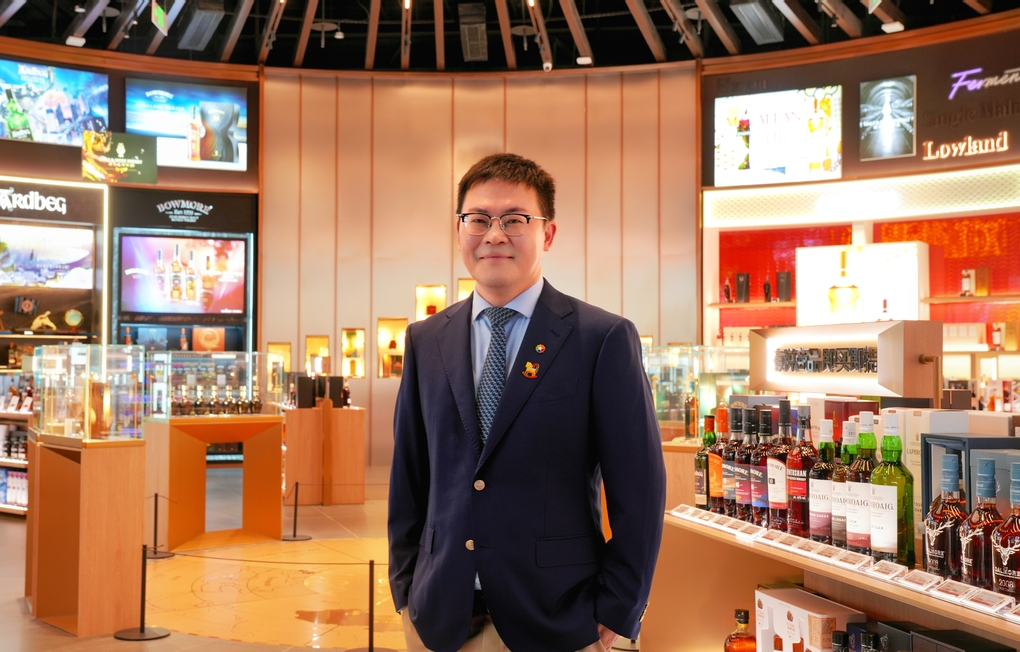UK. London Heathrow Retail Director Fraser Brown is in upbeat mood when we meet at TFWA World Exhibition, as he points to recent growth and a positive traffic and consumer outlook at Europe’s largest airport.
In a year of record traffic highs, Heathrow became the first airport in Europe to serve 8 million passengers in one month during August. The projection for the full year is for 84.2 million, from 83.9 million in 2024.
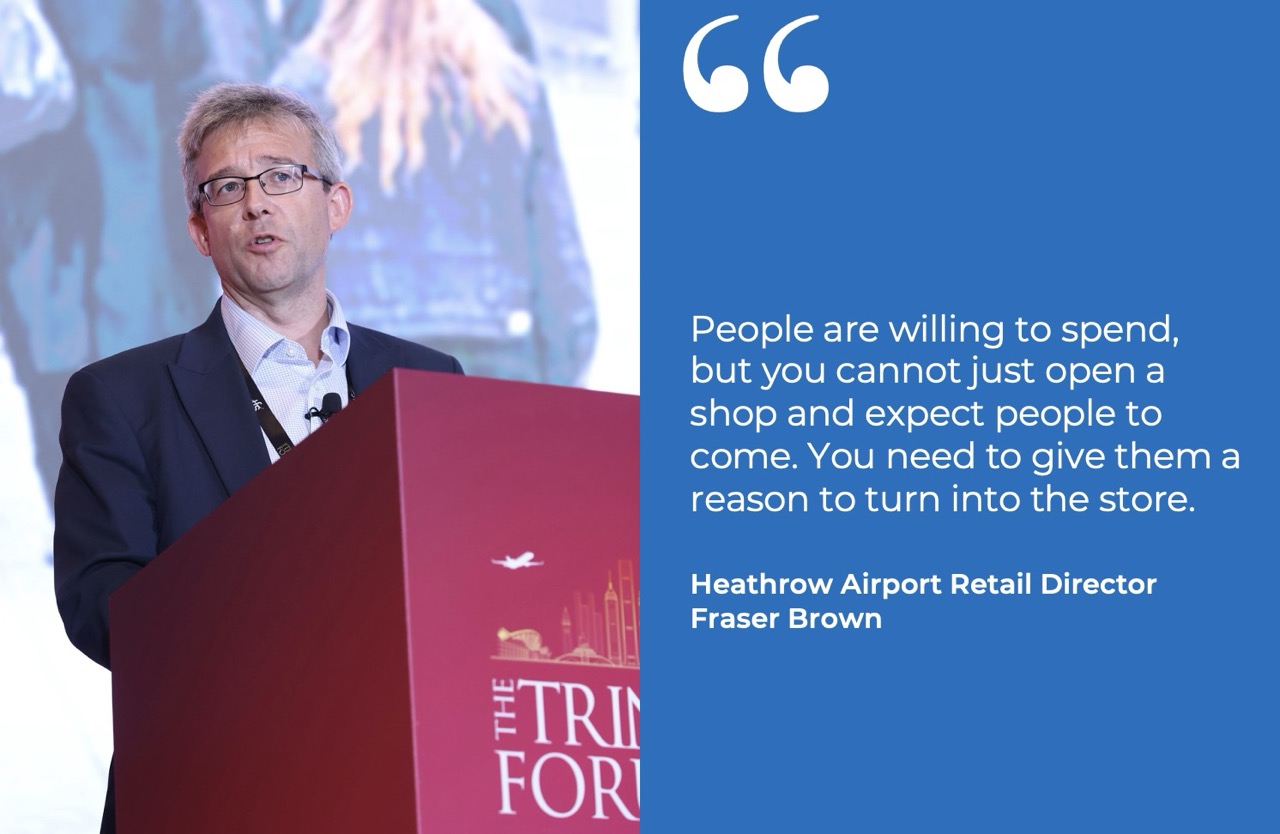
Brown says: “It’s not just about the numbers, though 8 million a real milestone; those travellers are being served excellently too. When we look at the matrix of passenger service scores, we examine the main things that passengers care about. How quickly do they get through security, which is clearly a friction point in the journey? Last month it was 98% in five minutes. Here we see the benefit the investment in new security lanes paying off.
“Punctuality (within 15 minutes of scheduled flight time) is at a record level, significantly higher than other European and global hubs. We have gone from around about 70% punctuality to 82%. So while we talk travel retail, being both safe and on time are basic hygiene factors for the traveller.”
To hit these service levels, airlines and operational teams are using artificial intelligence to make better decisions and to plan more effectively, while another, less-talked-about factor also comes into play, says Brown.
“We are now through the post-COVID period when we were bringing people back into the workforce. UK aviation lost more people percentage-wise than other European countries due to furlough schemes and other factors.
“When they came back, they were on a learning curve and a maturity curve. Today they are there, they are experienced, they are using technology tools better, and the airport is functioning better. When you add those things up, the whole system works in sync.”
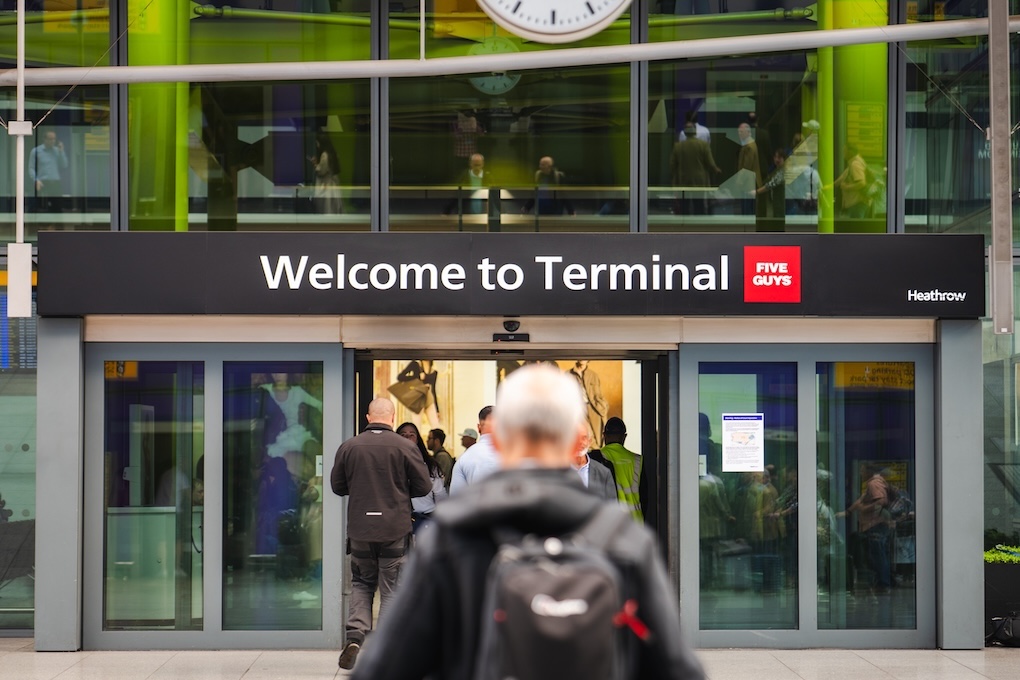
The passenger traffic and service picture align with one other crucial factor in Heathrow’s makeup – one that the retail team has been reinforcing with commercial partners and brands recently – and that is the above-average proportion of premium travellers (defined as First or Business Class plus Premium Economy) using its four terminals.
Brown says, “In the industry, the average for a big hub is about 12-13% of passengers travelling in premium cabins but at Heathrow it’s around 25%.
“That means airlines are yielding more money. That is important because as part of the ecosystem that travel retail sits in, you need to have profitable airlines.
“This is also closely related to the fact that more passengers than ever are flying long-haul. If airlines premiumise they can make more money, and if they cannot add slots or flights to build volume, then premiumising is the way to improve yield.
“For our partners and brands at Heathrow, that proportion means there is no better airport on the planet to get in front of that premium audience, we would argue. Other airports do a great job but they don’t have that benefit.
“With over 80 million passengers, more than 20 million are in that premium segment, and no other airport gets into double figures. This tells you that demographically the people that fly through Heathrow have got money in their pocket to an extent; that is not the case at any other airport in the planet.”
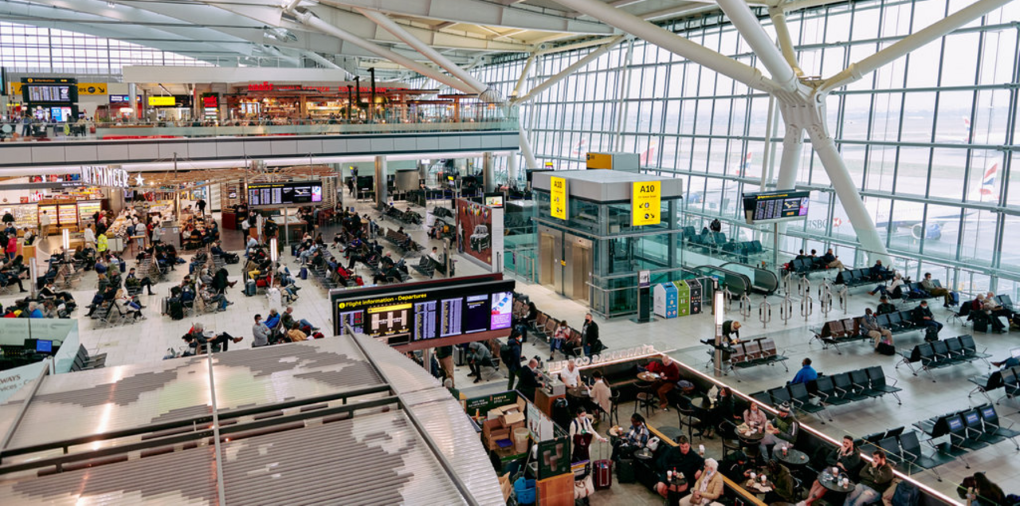
But are these numbers so valuable commercially if many go straight to the lounges?
While Brown acknowledges this as a commercial risk factor, he adds: “There are a few things at play here. How do you retail in lounges? It’s an untapped industry opportunity.
“Also how do you make the retail offer strong enough that either on the way to the lounge or on the way from the lounge to the gate they are attracted into stores and you can stop them for long enough to spend? I’m convinced that if you make the offer strong enough, they will do just that.
“You can worry about eligible flyers going to the lounge, where they get free food at good quality, and say that affects our F&B business. In fact what we have learned is if you make it attractive enough, people will come out of the lounges and go for something special or different. Plane Kitchen by Gordon Ramsay in T5 is a case in point. In the 17 years since it opened it has consistently attracted people from the British Airways lounges.”
A changing T5 landscape
Against this backdrop, further change is coming at Heathrow, both short and longer term.
In coming weeks, well-known American burger chain Five Guys will open a restaurant in Terminal 5. It will be the brand’s first venue in a European airport. The 2,500sq ft dining spot will occupy a prime location on the upper level, with plans to accommodate 90 covers, alongside a speedy takeaway option.
Brown says: “We think there is a place selectively for the quick-service restaurant (QSR) category at Heathrow Airport. We will look elsewhere in the terminals for F&B opportunities where we can serve quickly and do more volume in small spaces. QSR is certainly something we have in the mix and are excited about.”
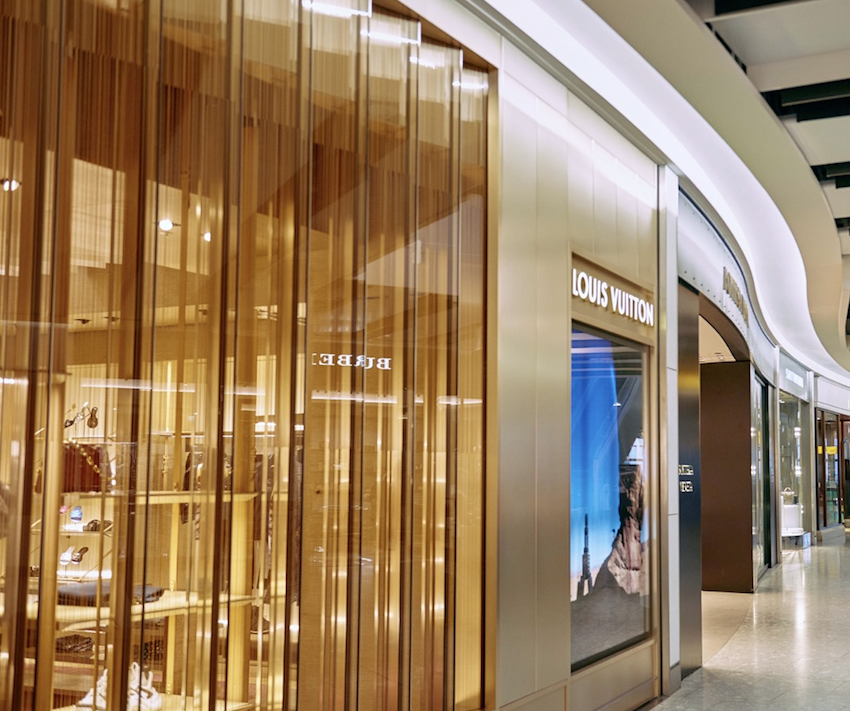
Also in T5, the process that saw tenders launched in late 2024 for luxury space is complete, with the focus now turning to a series of openings, coming soon.
In recent weeks Heathrow closed Watches of Switzerland, Prada, Dior, Hermès and Bottega Veneta boutiques, with the future taking shape behind hoardings.
Prada will reopen with a resized boutique – an eye-catching pop-up replaces it temporarily – while Dior and Hermès will gain larger footprints.
One other space is tendered to a luxury brand, to be named once contracts are signed, while the space occupied by Bottega Veneta will be split between two further renowned luxury brands, also to be named shortly.
Brown says: “These stores will be run on the basis of having a greater plurality of offer, challenging the brands to operate efficiently within the super-tight space that is Heathrow. It also shows the confidence that brands have in Heathrow despite the loss of tax-free shopping.”

In T3, some small changes should have wider impact on space, service and reputation. Relaying the dark wood floor with light-coloured tile in Heathrow’s most congested terminal should create a better ambience.
In other T3 moves, Heathrow has taken pop-up retail space, consolidated a foreign exchange unit, an information desk and a reserve & collect counter into one area, freeing up more seating area, notably for Caffé Nero.
The other big commercial development was the announcement in recent days that Heathrow Airport has awarded Global Exchange the contract to manage currency exchange service across its four terminals from January 2026. It follows a full market tender for the business, with current provider Travelex exiting the business.
Brown says: “Heathrow is delighted to welcome Global Exchange to the airport. As a result of its world-leading technology and dedication to customer service, Global Exchange has established itself as a recognised market leader.
“We look forward to the Global Exchange team joining Heathrow and delivering travel money products and services that will help us to make every journey better.”
He also pays tribute to Travelex’s 39 years of “excellent service” to the airport.
Thinking long term
Heathrow has also laid out its short and longer-term investment plans, led by an initial £2.3 billion (US$3.1 billion) upgrading through 2026.
Brown says: “Not many airports will spend that figure this year and next in upgrading their facilities. For passengers, airlines and concession partners, the benefits come in further efficiencies of time and space, led by the upgrading of security lanes, which in turn reduce one key pain point on the journey. It will also help in decommissioning a baggage system in the old T1 that feeds T2.”
In July, Heathrow also announced its five-year plan (regulatory period H8) with a £10 billion (US$13.4 billion) investment to 2031.
The company described it as “the next plank in our strategy to climb back up the international rankings and be an extraordinary airport, fit for the future”.
Once complete, Heathrow will be able to serve 10 million more passengers a year (reaching 95 million), a +12% increase in capacity compared to today.
For the first time in a decade, Heathrow will create space for additional lounges, shops and restaurants within existing terminals.
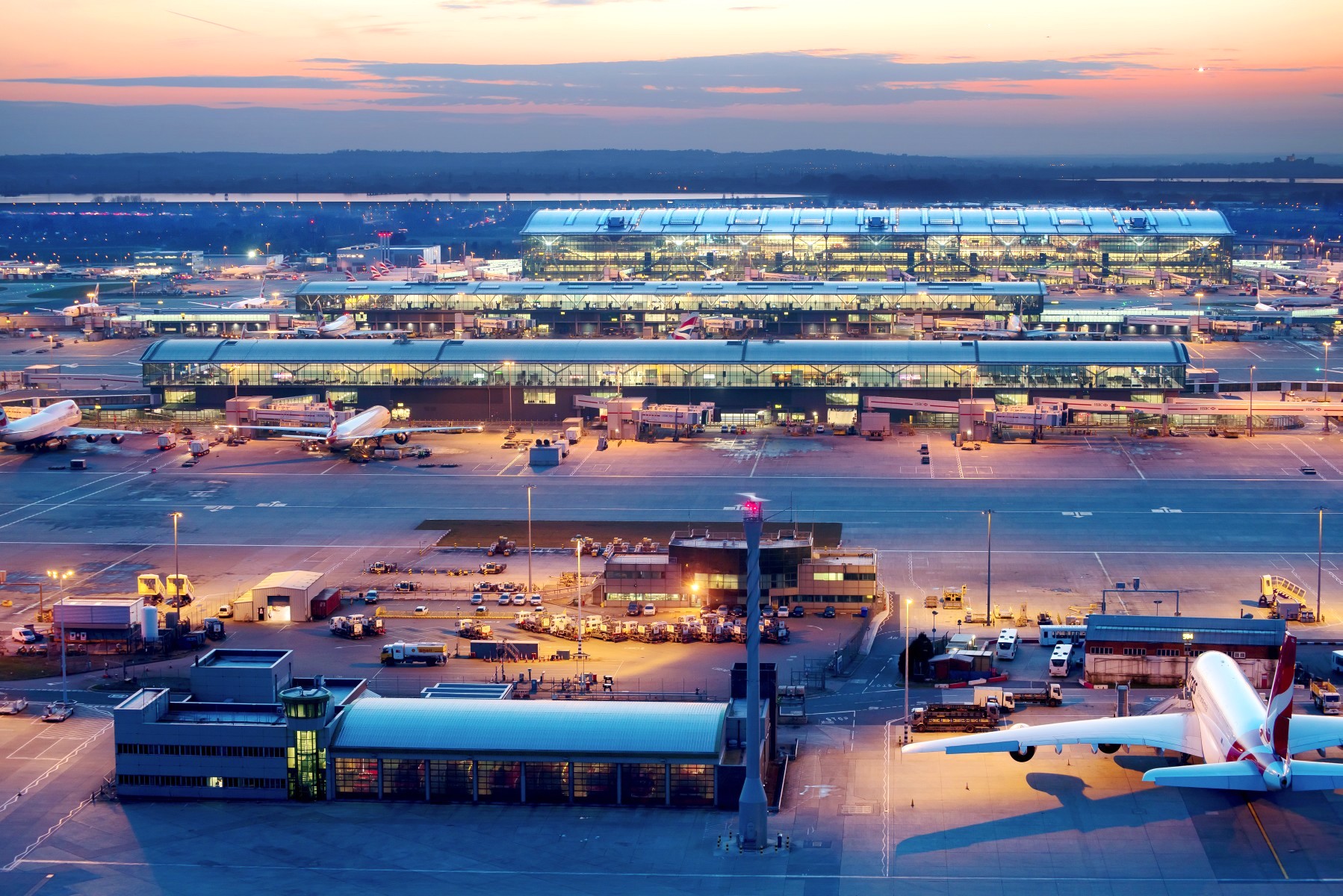
The pillars underpinning that plan are service, resilience and capacity. The service part involves improving the ambience of terminals and those in-terminal services for travellers.
Resilience has taken on a more acute focus after the outage at Heathrow on 21 March when an external supplier of electricity failed, causing huge disruption to flights. A report from that event included some recommendations around making infrastructure around the estate more resilient to external shocks, such as power outages.
For a travel retail audience, capacity is probably the key area of impact from this investment.
The major focus, or around 70% of the 10 million passenger capacity enhancement, will come at T5, with IAG having placed large orders for aircraft that will use Heathrow as their base into the future.
In concrete terms, says Brown, this means extending use of T5 satellites B and C, and some internal reconfiguring of the main terminal, taking for example lounge spaces and moving them higher at the northern end, with further moves to redistribute lounge areas to the south. This will allow Heathrow to create more commercial space.
Brown says: “T5, which is already in terminal size really the biggest terminal in Europe, will get bigger. When it opened in 2008, in the first year it served 27 million and today we are at 35 million.
“By and large, the delivery of that is directly in our control. We can choose to make the investment if the regulator gives us a sensible settlement, allows us to earn a return that is matching the risk that we take by making that investment, and our six long-term investors will be able to go to the market and finance that.”
Then there is the question of the long-discussed third runway at Heathrow, with proposals put before government in the summer. The plan includes a £21 billion (US$28.2 billion) privately financed additional runway, supported by new terminal capacity and upgraded infrastructure. This is part of a larger £49 billion (US$65.8 billion) investment to expand and modernise Heathrow, increasing capacity to 150 million passengers a year.
Heathrow released a video (below) and statement on 30 September outlining how it would reroute parts of the M25 motorway. The new future-proofed section would be built ‘offline’ on land 130 metres to the west of today’s motorway, keeping construction separate from daily commuters. Traffic would then be switched from the old route.
A new video released last week outlines how Heathrow will upgrade the UK’s busiest motorway and keep motorists moving; click above to view
Addressing concerns over a new road layout and how the M25 would pass under the runway, the airport company said: “Building a new runway over a motorway is far from new and has been successfully delivered at other airports, including Frankfurt and Charles de Gaulle, Paris.”
Brown says: “The decision now is with the government and we are really appreciative of the government’s engagement so far. London is the largest aviation market in the world and expanding Heathrow will add additional capacity at the UK’s hub airport.
“If the government are serious about their growth mission, and we completely align with that, then there is no better individual growth project in the United Kingdom than building a third runway at Heathrow. For the country’s growth, this is a fabulous project. It will add 0.43% to UK GDP, which is material.”
We close by reflecting on Heathrow’s engagement with its partners both at Cannes this year and in a wider sense. In an interview with The Moodie Davitt Report at Cannes a year ago, Brown called on brands to lift their level of engagement to travellers.
At the time he said: “Being laser-focused on consumers and doing the basics well is one element. We must have the right product and be innovative. Do we have the right value proposition, not just on price but on offering products that represent value in its widest? We can only be that extraordinary airport if the retail and F&B is world beating, and travellers rate it as such.”
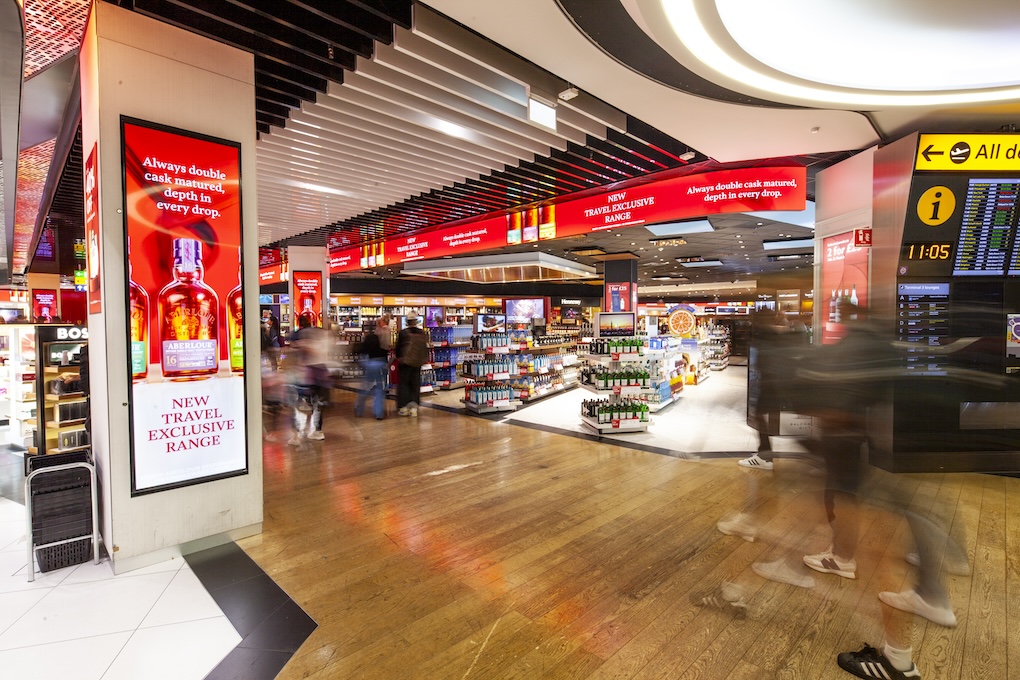
A year on and Brown says he is encouraged by how brands are thinking and acting around product, innovation, personalisation, activation and people.
He says, “We know the market is tough in core categories, like alcohol at a premium level, like beauty at a premium level.
“But what is encouraging is that brands are continuing to realise that they need to be more assertive in their new product development, and that they and their people are working in tandem with the major retailers across all touchpoints, using physical and digital tools.
“Brands that have great product, are working with the retailers to animate it well and have great colleagues, are showing that you can extract money from passengers. They are willing to spend, but the industry cannot just open a shop and expect people to come. You need to give people a reason to turn into the store.
“Many brands are also telling us about how they are fixing their distribution, being more selective about what and where they sell, sorting their stock levels and looking at pricing.
“So I’m encouraged by what I hear brands themselves saying they are doing about addressing how they can provide better product and service to us at Heathrow and to the industry.” ✈







